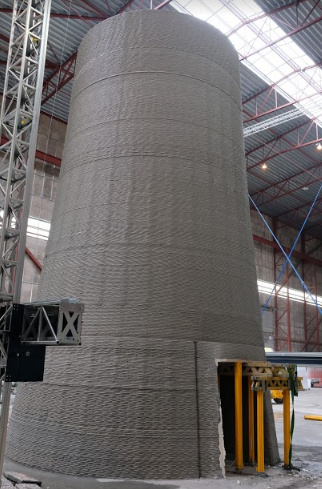NGen, the non-profit behind Canada’s Global Innovation Cluster for Advanced Manufacturing, has announced a new project call dedicated to improving the ecological sustainability of Canadian manufacturing. Dubbed the Sustainable Manufacturing Challenge, the program will see NGen invest $35 million, matched by over $65 million from industry, to accelerate the adoption of Canadian clean and advanced technologies.
The program is meant to support the nation’s goal of achieving net-zero greenhouse gas emissions through such methods as reducing energy usage and natural resource consumption, increasing operational efficiency, cutting waste, using recycled and sustainable materials, improving product life cycle management and closed loop manufacturing, and cultivating circular materials production. Focus areas for applications should be dedicated to the following:
- Low carbon – fuel, feedstock, energy – applied to manufacturing.
- Implementation of net-zero facilities.
- Innovative solutions for high heat generation – applied to manufacturing.
- Carbon Capture, Utilization, and Storage – applied to manufacturing.
- Tracking and managing GHG emissions across the supply chain.
- Smart Manufacturing for efficiency gains and GHG reduction.
- Greener/circular/sustainable materials.
- Other – contact smc@ngen.ca to validate eligibility.
“Advanced manufacturing offers many of the solutions necessary to achieve Canada’s emission reduction goals,” said Jayson Myers, CEO, NGen. “NGen is looking to combine our tremendous strengths in cleantech, automation, advanced materials and smart digital technologies to develop solutions for sustainable manufacturing that will benefit Canada and the world.”
If any or all of this sounds like additive manufacturing (AM) to you, then you’re an avid reader of 3DPrint.com. We’ve been covering the opportunities for 3D printing companies in government-backed initiatives such as this for several years now. What makes AM so ideal for these sorts of projects is the fact that it can improve the operational efficiency of most systems while also reducing energy and resource inputs. In some cases, it can do so with recycled feedstocks. In other words, it meets most of the criteria mentioned by the NGen project call.

Composite prototype of lightning tip receptor for wind turbine blades to reduce lightning strike damage. Image courtesy of Markforged.
Despite market fragmentation, the U.S. 3D printing ecosystem is comparatively robust. Though Canadian manufacturers can turn to providers from outside of the country, Canada’s domestic AM landscape is less fully developed. At the same time, the nation’s natural resources set Canada up to be an ideal location for an advanced manufacturing revolution.
The country is experiencing an oil and gas boom that will likely serve as a key source for fuel in the near- and mid-term, as the world shifts to renewables. As discussed in other articles, this transition won’t be an abrupt one but will likely require buy-in from fossil fuel companies who, despite the valid concerns of environmentalists, essentially maintain the global economy.

A 3D printed concrete wind turbine base made using the BOD 2 3D printer for GE. Image courtesy of COBOD.
For that reason, it is necessary for AM projects to help improve the overall efficiency of oil and gas operations in such a way that those same benefits can be ported over to renewable energy projects. Efficiency gains in running any energy system will ultimately reduce the impact of human activity on its ecosystem regardless of what input is fueling that activity. This is why the carbon credit contracts for difference that Canada recently enacted could be essential to funding such a transition.
With all of that in mind, the boom that Canada is experiencing otherwise could also be a boon for advanced manufacturing in the country. Going forward, there is a real opportunity for Canada’s Global Innovation Clusters to cross-pollinate not just with each other but the growing number of similar clusters appearing around the globe. To learn more about the project call, including key dates and deadlines, eligibility criteria, and program scope, visit the dedicated NGen program page. You can also contact NGen at smc@ngen.ca.
Subscribe to Our Email Newsletter
Stay up-to-date on all the latest news from the 3D printing industry and receive information and offers from third party vendors.
You May Also Like
The Third World War & The Disruption of US Military Power
A Reddit user once remarked, “The most terrifying capability of the United States military remains the capacity to deploy a fully operational Burger King to any terrestrial theater of operations...
Australia to Go Orbital: Gilmour Space Gears up for Historic Launch
Australia is on the brink of a historic achievement in space exploration. Gilmour Space Technologies, a pioneering company based on the Gold Coast, has secured the nation’s first-ever orbital launch...
3D Printing Webinar and Event Roundup: November 10, 2024
We’ve got another busy week ahead of webinars and events around the world! There are multiple open houses and conferences, advanced AM training, a 3D printer launch event, our own...
3D Printing News Briefs, November 9, 2024: Concept Car, Afloat 3D Printing, & More
In today’s 3D Printing News Briefs, we’ll start with business, as Anisoprint appointed AM industry veteran Tuan TranPham as President of the Americas and APAC. Then we’ll move onto automotive...




































